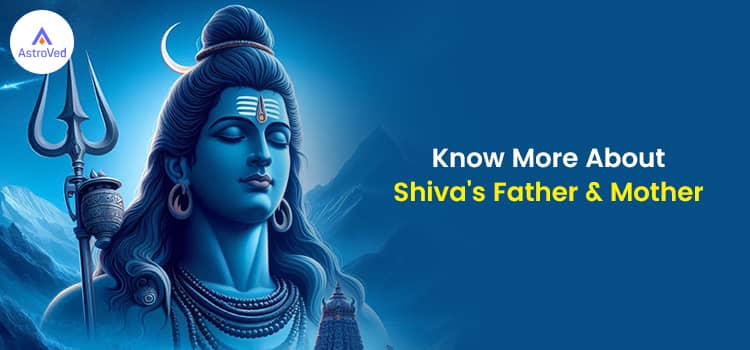Know More About Shiva's Father & Mother
Lord Shiva is one of the main deities in Hinduism. Shiva is known for his power and wisdom, shown with a crescent moon on his head, a drum in one hand, a trident in the other, and a snake coiled around his neck. He is one of the Trimurtis, along with Brahma and Vishnu, which completes the holy trinity. While Brahma is known as the creator and Vishnu as the preserver, Lord Shiva is known as the destroyer and transformer, a critical aspect of the cycle of creation and destruction. For Shaivaites, he is invincible beyond all limitations and dualities and unbeatable beyond all boundaries, making him the ultimate divine power. Shiva is depicted in various manifestations and forms throughout India and is a source of protection and blessings to his devotees.
Shiva is depicted as an avatar of detachment and simplicity. He is a symbol of aspects such as asceticism, destruction, meditation and regeneration. He is synonymous with the River Ganga, Goddess Parvati, his divine consort and Mount Kailash. He is the father of Ganesha and Subramanya.
You will learn about his family, which will help you get a grasp of Lord Shiva's role in Hindu mythology and his spiritual nature. You can learn more about Hindu rituals, including the philosophical beliefs, legends, and significance. Exploring his lineage broadens the understanding of Hindu mythology, culture, and spirituality.
Father Of Lord Shiva
Brahma is the creator and is one of the main Hindu deities. He is portrayed with four faces, each representing the four Vedas (sacred Hindu texts). He is shown seated on a lotus, appearing from Lord Vishnu, representing creation. As per mythology, the universe was created from the Brahmanda by Lord Brahma. Through his divine power and will, he brought various elements of creation, along with the material universe, time and space. He is said to have originated various non-living and living beings that occupy the universe.
Three Hindu gods, Brahma, Vishnu, and Shiva, represent the three aspects of ultimate reality. Brahma is the universe creator, Vishnu is the preserver, and Shiva is the destroyer and regenerator. Each of these three forms fulfils a critical function to restore order and balance to the universe.
In Hinduism, Lord Brahma and Lord Shiva are the most important deities, and their relationship has been depicted in a complex manner. This relationship is shown in many stories that demonstrate the opposite natures of the two gods; in many stories, Brahma and Shiva were in direct conflict, and although this can be seen as destructive, it also symbolises the cyclical nature of creation and destruction. Despite their conflicts, they complement each other for cosmic balance, with Brahma serving as the creator and Shiva as the transformer.

Mother Of Lord Shiva
According to Hindu texts, Goddess Adi Parashakti, or in layman's terms, Shakti, is the mother of the universe. She is representative of the original energy present throughout existence. She is illustrated as the primal energy, which serves as the original creative and transformation energy, and as the goddess, she is the mother who supports and nurtures life.
Many mythological legends narrate the manifestation or birth of Goddess Adi Parashakti. One story describes her emergence from the universe’s cosmic energies to restore harmony and balance. Another legend portrays her as Lord Shiva’s consort, emerging from him to fulfil her cosmic role. Shakti personifies the creative and dynamic aspect of divine feminine energy. She is the ultimate force that powers the creation, preservation and destructive cycles of the universe. She is worshipped as Durga, Parvati, Kali, Prakriti, and Lakshmi, with each representing a distinct aspect of the feminine divine power.
The relationship of Lord Shiva and Shakti is a vital aspect of Hindu philosophy and mythology. Shiva is the masculine and Shakti is the feminine counterpart. Their union is deemed as merging destruction and creation forces into a cohesive whole. Shakti is the active aspect and Shiva the passive aspect in the dance of destruction (Tandava).
Understanding The Parentage Of Lord Shiva
What is the lineage of Lord Shiva, and who are his parents? The relationship of Lord Shiva with his father and mother showcases the complex cyclic exchange of destruction, creation and preservation that promotes cosmic order. Goddess Adi Parashakti’s role as the primordial energy and Lord Brahma as the creator is a perfect illustration of the dynamic forces in action in the universe.
Conclusion
As you understand Lord Shiva’s parentage, you should delve more into Hindu mythology to embrace the teachings of oneness and pursue spiritual enlightenment. With this understanding of Lord Shiva’s parentage, one should be motivated to have a greater understanding, reverence and harmony in life and the world.







